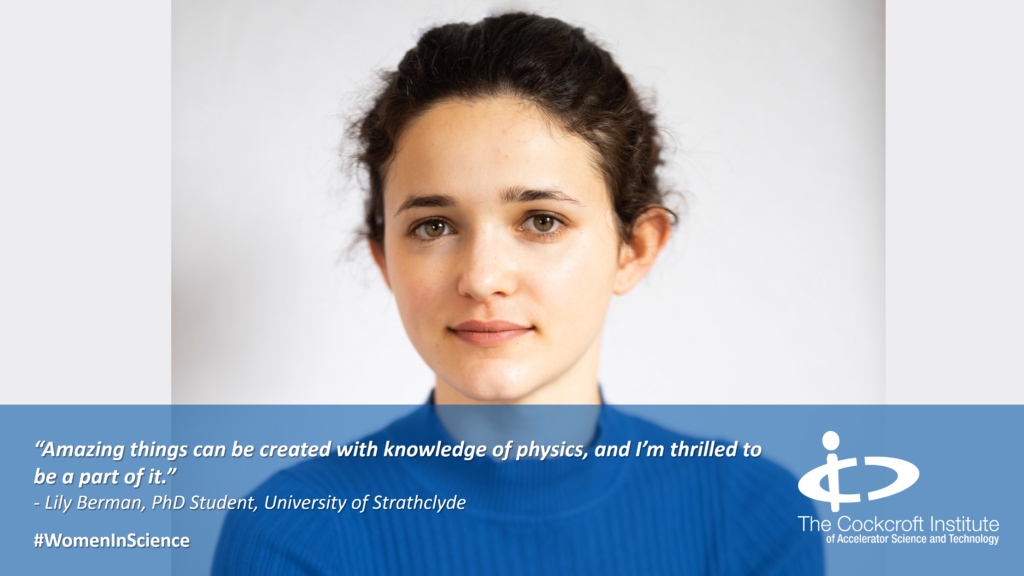
My area of expertise is in a novel type of particle accelerator called a plasma wakefield accelerator, and how this may be used to power next generation x-ray free-electron lasers (XFEL), which are the brightest x-ray light sources available to researchers. XFELs can be used to study things on the atomic scale, and are used for ground-breaking research across a very wide range of scientific fields. However, existing XFELs are powered by ‘conventional’ particle accelerators based on radio-frequency technology, meaning that they are large and costly facilities on the order of kilometres. Therefore, only a handful exist and the time available to users is limited. It’s hoped that a plasma wakefield accelerator could shrink the size of an XFEL from kilometres to metres, increasing research capacity and enabling potentially novel capabilities.
I hadn’t heard of any of these topics until near the end of my final year of undergrad. All I knew was that I loved optics, which I was introduced to on an exchange year to the University of Sydney in Australia. I was lucky enough to take advanced optics courses and discover the amazing things that can be done with light, from optical computers to optical tweezers that can move objects with the forces from photons themselves. I wanted to study this field further, and was thrilled to come across a PhD that would let me work on developing the brightest coherent light sources yet. I was also keen to learn about particle acceleration, especially from the Cockcroft Institute which offers a thorough introduction to the field through its lecture programme.
“Amazing things can be created with knowledge of physics, and I’m thrilled to be a part of it.”
Lily Berman
Academic research is also inherently collaborative across national borders. The research group I’m embedded in, led by Prof. Hidding at the University of Strathclyde, works with many other researchers in countries such as Germany and the US at amazing facilities. One of these is the Stanford Linear Accelerator (SLAC) in California, where a new round of wakefield acceleration experiments (E-31x) are planned and in which I will be centrally involved.
I’ve always loved science, but didn’t always know it was the thing I wanted to pursue. At school I wanted to learn as much as possible about everything, and equally loved English, art, geography…it was impossible to choose! Perhaps surprisingly for a now-physicist, the one thing I didn’t enjoy was maths, which I found a struggle. As I progressed into my later years of school, I started reading about the impossible-sounding things physics predicts that are nonetheless real. Wanting to get to the bottom of these mysteries, I realised that science was the way to go for me.
I also realised that I could do maths well enough to be a physicist. The most common response I get when I tell people that I’m doing a PhD in physics is that they ‘could never do any of that stuff’, or ‘I can’t do maths’. This is something that annoys and saddens me – I think maths and physics are portrayed in our society as the preserve of Einstein-level geniuses, while essay-based subjects are presented as more accessible. This is a worldview I strongly oppose – maths is a tool that we use to do physics, and one that is usable enough to do some really exciting things even if you’re not a natural-born mathematician.
I’ve never felt held back as a woman in physics. I’ve often been the only girl in the room, but haven’t been deterred by it – it seems obvious to me that this shouldn’t matter at all or pre-define my scientific ability. If you’re a girl or a woman considering physics, or in fact any science, please know that it is most definitely for you if you want it to be!
